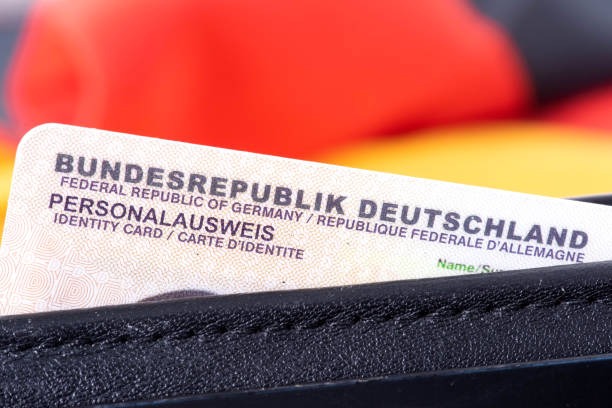Blog
The New German Electronic ID Card What’s Changed in 2025
The New German Electronic ID Card What’s Changed in 2025
The New German Electronic ID Card What’s Changed in 2025. The German Electronic ID Card, commonly known as the Personalausweis, has long been one of the most secure and advanced identification systems in the world. In 2025, Germany introduced a major update to this digital identity tool, bringing in cutting-edge security measures, simplified access features, and wider European interoperability. These changes are designed to make life easier for citizens and businesses while enhancing privacy and online security.
In this article, we’ll explore what’s new in the German Electronic ID Card for 2025, why it matters, and how these changes will affect residents, expatriates, and digital service providers across Europe.
![]()
1. Overview: What Is the German Electronic ID Card?
The Personalausweis is Germany’s official identification card issued to all citizens over the age of 16. Besides serving as a traditional ID for in-person identification, it also includes a built-in electronic function — known as Online-Ausweisfunktion — that enables secure online authentication.
With this feature, citizens can verify their identity digitally when using public services, signing contracts, or making online purchases. Since its introduction, the electronic ID card has played a crucial role in Germany’s shift toward digital governance and e-services.
However, as technology evolves, so do the challenges of data protection, cybersecurity, and usability. This is where the 2025 version of the German eID card steps in.
2. The 2025 Update: What’s New and Improved
The German government has rolled out several major updates to the eID card in 2025 to make it more secure, user-friendly, and compatible with EU-wide standards.
a. Biometric Enhancements
The new 2025 ID card now supports advanced biometric identification, including upgraded fingerprint and facial recognition features. These enhancements ensure stronger protection against identity theft and fraud, while streamlining verification for both online and physical transactions.
Additionally, the biometric data storage system has been upgraded to comply with the latest EU data protection regulations (GDPR 2.0). This ensures that personal data remains encrypted and can only be accessed by authorized entities.
b. NFC and Mobile Integration
One of the biggest innovations in 2025 is the improved NFC (Near Field Communication) capability. Citizens can now use their smartphones to verify their identity directly through official apps without requiring additional hardware or card readers.
The AusweisApp2 has been revamped to support mobile ID verification across Android and iOS devices, enabling a fully digital experience. This means users can now store a virtual version of their ID on their smartphones — a huge step toward convenience and mobility.
c. European Digital Identity Wallet Compatibility
In 2025, Germany officially aligned its electronic ID card with the European Digital Identity (EUDI) framework. This allows German citizens to use their ID card or digital wallet across all EU member states for online government services, banking, healthcare access, and digital signatures.
The integration ensures that a German eID is now recognized across Europe — reducing bureaucratic barriers and promoting cross-border digital services.
d. Stronger Cybersecurity Protocols
With cyber threats becoming increasingly sophisticated, the 2025 ID card update introduces multi-layered encryption, AI-powered threat detection, and automatic security patches. The goal is to protect users from phishing, cloning, and unauthorized data access.
Germany’s Federal Office for Information Security (BSI) has also implemented post-quantum cryptography readiness to future-proof the system against potential quantum computing attacks.
3. Why These Changes Matter
The latest updates to the German Electronic ID card are not just about better technology — they are about enhancing digital trust and efficiency.
-
For Citizens: The improvements mean faster, easier access to essential services without compromising security. From online tax filings to signing rental agreements, the process is more seamless than ever.
-
For Businesses: Companies can now integrate eID verification into their platforms more easily, reducing fraud and streamlining onboarding processes for new clients.
-
For Government Agencies: Digital administration becomes smoother, saving time and costs while improving accuracy and transparency in citizen interactions.
Ultimately, the 2025 changes align with Germany’s broader Digital Strategy 2030, which aims to make the nation a leader in secure digital infrastructure and innovation.
4. How to Use the 2025 German Electronic ID Card
Using the updated eID card is straightforward, especially with the new mobile features. Here’s how:
-
Activate Your eID Function:
Upon receiving your new ID card, you must activate the online identification feature (Online-Ausweisfunktion). This can be done at your local citizen’s office or online. -
Download the Official App:
Install the new version of the AusweisApp2, now optimized for smartphones and tablets. This app allows you to connect your ID card to government and private service portals securely. -
Verify via NFC:
When using your smartphone, simply tap your ID card against the back of your device to verify your identity instantly. -
Use for Online Services:
You can now access various services like tax declarations, driver’s license renewals, university applications, and healthcare portals through the eID system.
5. Data Protection and Privacy in 2025
Data security remains at the heart of Germany’s ID system. The 2025 card ensures complete user control over shared information. Users must explicitly consent before any data is transmitted, and only the required data for a specific transaction is shared.
Additionally, all communications between your device and the verification server are encrypted end-to-end. The BSI continues to audit and certify all components of the eID infrastructure to maintain public trust and transparency.
6. What This Means for the Future
The 2025 update is just the beginning. The German government plans to introduce further integrations, such as digital driving licenses, healthcare cards, and electronic voting capabilities — all potentially linked through a single, secure identity platform.
This new system is not only a leap forward for German citizens but also sets a precedent for digital identity management worldwide. By combining convenience with security, Germany is paving the way for a smarter and safer digital society.
7. Final Thoughts
The New German Electronic ID Card (2025) represents a milestone in digital transformation. With enhanced biometric verification, improved mobile access, EU-wide compatibility, and stronger cybersecurity, it marks a new era of digital identity management.
Whether you’re a German citizen, an EU resident, or a business operating in Europe, the upgraded system opens doors to more efficient, secure, and convenient interactions in the digital world.
Germany’s 2025 eID isn’t just a card — it’s your digital key to the future.

